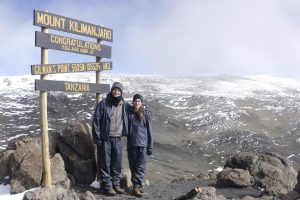The Difficulty of Climbing Kilimanjaro
Climbing Mount Kilimanjaro, the highest peak in Africa, is a challenging feat that requires physical strength, mental determination, and careful preparation. Many climbers underestimate the difficulty of this endeavor, leading to disappointment or even failure. In this article, we will explore the challenges faced on the ascent of Kilimanjaro and the factors contributing to its difficulty.
Challenges Faced on the Ascent of Kilimanjaro
One of the main challenges of climbing Kilimanjaro is the altitude. The mountain rises to an impressive 19,341 feet above sea level, and climbers may experience symptoms of altitude sickness such as headaches, nausea, and fatigue as they ascend. It is important for climbers to acclimatize properly by taking their time and allowing their bodies to adjust to the thin air.
Another challenge is the unpredictable weather on Kilimanjaro. The mountain is known for its ever-changing climate, with temperatures ranging from scorching heat to freezing cold. Climbers must be prepared for rain, wind, and even snow at higher altitudes. Proper gear such as waterproof clothing, warm layers, and sturdy hiking boots are essential for a successful ascent.
The physical demands of climbing Kilimanjaro should not be underestimated. The trek to the summit is long and strenuous, with steep inclines and rocky terrain. Climbers must be in good physical condition and mentally prepared for the physical exertion required to reach the top. Training for the climb with regular exercise such as hiking, running, and strength training is crucial for success.
Factors Contributing to the Difficulty of Climbing
Several factors contribute to the difficulty of climbing Kilimanjaro. The sheer altitude of the mountain makes it a challenging endeavor, as the air becomes thinner the higher you climb. Altitude sickness is a common issue faced by climbers, and it can be dangerous if not properly managed. Climbers must be aware of the symptoms and take necessary precautions to prevent altitude-related illnesses.
The varying climate on Kilimanjaro can also pose a challenge to climbers. The mountain’s location near the equator means that temperatures can fluctuate dramatically throughout the day. Climbers must be prepared for extreme heat, cold, wind, and precipitation, and pack accordingly. Proper gear such as a good quality sleeping bag, insulated jacket, and waterproof clothing is essential for a comfortable and safe ascent.
In conclusion, climbing Kilimanjaro is a difficult and demanding task that requires careful planning, physical fitness, and mental resilience. Sunset Africa Safari offers guided tours to the summit of Kilimanjaro, providing experienced guides, support staff, and logistical support to ensure a safe and successful ascent. For booking inquiries, please contact info@sunsetafricasafari.com. With the right preparation and determination, climbers can conquer the challenge of Kilimanjaro and experience the breathtaking beauty of Africa’s highest peak.


